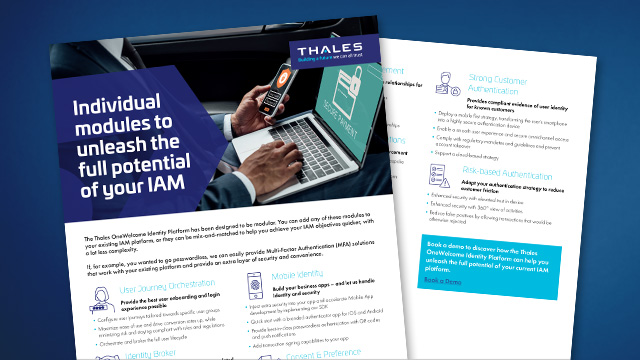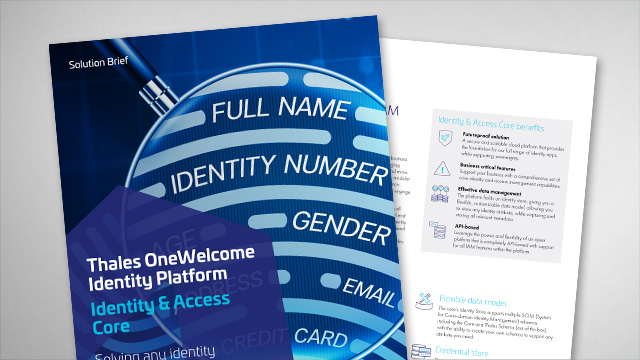Adjust access based on context and real-time risk assessment
Traditional access controls can be inflexible, leaving systems vulnerable to breaches, while potentially compromising user experience. Adaptive Access Control adjusts access permissions based on real-time or near real-time user behavior and contextual factors. This ensures smoother user interactions while maintaining the highest level of security.

Enhance security
Safeguard your systems by adapting access controls in real-time based on user behavior and context.

Improve user experience
Provide seamless access to authorized users while maintaining security, enhancing productivity and satisfaction.

Adhere to Zero Trust principals
Use adaptive access to better address a zero trust posture by elevating security or revoking access based on context.
Improve security with context-based authentication
Thales' context-based authentication ensures convenient and frictionless authentication, while improving security with stronger access authorization controls in higher risk scenarios.
What is Adaptive Access Control?
Adaptive Access can be defined as a security approach that dynamically adapts access controls based on near-real-time assessments of user behavior, context, and risk factors. For instance, it considers if access attempts originate from unfamiliar or blacklisted IP addresses, suspicious devices, or sensitive resources that necessitate stronger authentication. Empowered by our OneWelcome Identity Platform, this capability enables organizations to strengthen security measures while ensuring seamless user access to resources and digital platforms.
How does Adaptive Access Control work?
Adaptive Access Control provides tailored security measures that adapt to unique characteristics, thereby mitigating risks and enhancing overall security posture. It operates through a combination of machine learning algorithms, behavioral analytics, and contextual data analysis.
Users are granted immediate access when meeting security policies; otherwise, they're prompted to provide an extra authentication factor like a PKI token or a one-time passcode.
By continuously monitoring user activities, device attributes, network conditions, and other contextual factors, it can accurately assess the risk associated with each access request.
Which type of identities do you want to protect?
Customer Identities
Customize access for customers dynamically for secure, compliant and personalized experiences.
Third-Party Identities
Integrate B2B and third-party access controls adaptively for reducing third-party risks.
Workforce Identities
Leverage adaptive access for employees to optimize security and productivity, when granting access to applications.


Thales Named an Overall Leader
Find the product or service that best meets your needs, and learn why KuppingerCole named Thales a Market Leader, Overall Leader, and Innovation Leader in Access Management

The relationship between trust and user experience is the foundation of successful online interactions. The imperative is clear: organizations must uphold an unwavering commitment to both data security and user experience to build a future where trust enables digital interactions.
Recommended resources
Frequently asked questions
Adaptive access dynamically adjusts access controls based on real-time assessments of user behavior, context, and risk factors, providing a more robust and adaptive security framework compared to static, one-size-fits-all approaches.
Yes, adaptive access can be configured to accommodate various user roles and access requirements by dynamically adjusting access permissions based on specific user attributes, contextual factors, and organizational policies.
Adaptive access balances security with user experience by providing seamless and uninterrupted access to resources for authorized users while effectively preventing unauthorized access attempts. This approach minimizes friction for legitimate users all while improving your security posture.
Adaptive access control is pivotal in zero trust security, making dynamic, context-aware access decisions. Its role to is to consider various factors like device posture, location, and user behavior beyond usernames and passwords. Continuously monitoring and analyzing these factors enables real-time risk assessment, allowing for granular security measures such as adjusting access permissions instantly. This approach ensures only authorized users with trustworthy devices access resources, reducing friction for legitimate users in a zero trust architecture.



